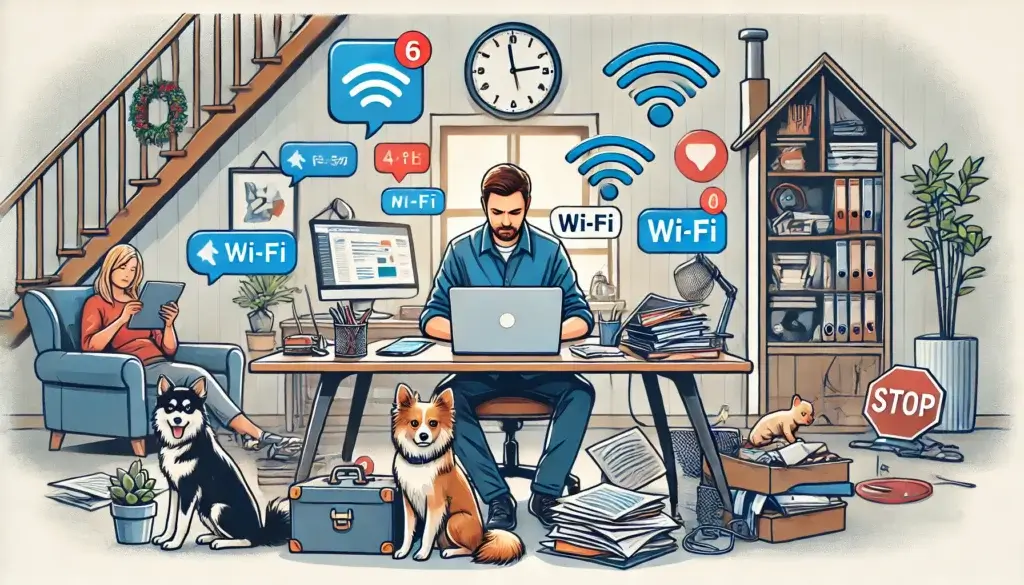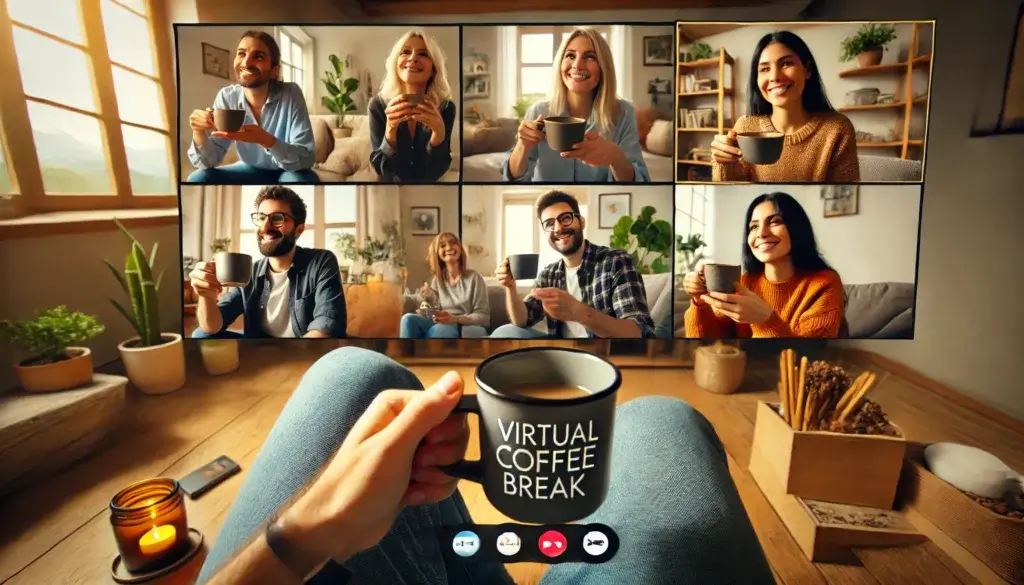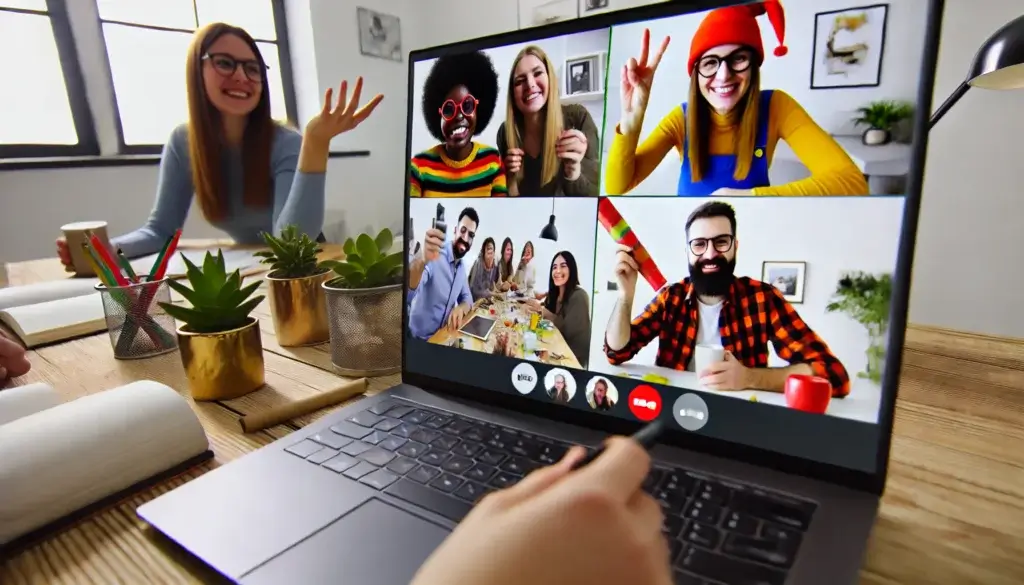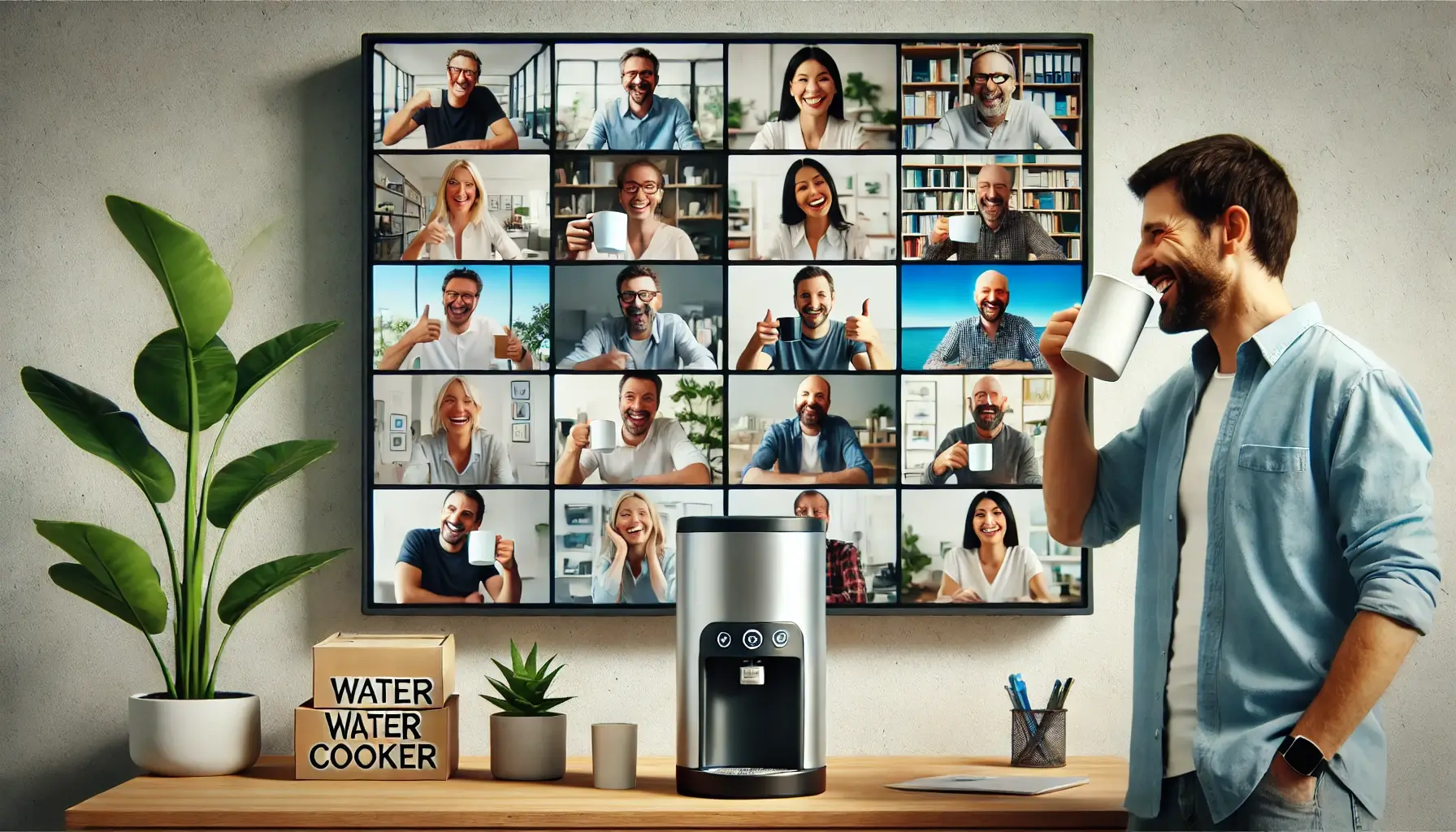The shift to remote work has completely changed how we connect, and it’s not something I think any of us saw coming quite like this. The impromptu hallway conversations, quick coffee break chats, or simply turning to your desk neighbor for a random comment, those moments have disappeared. And with them, so have some of the natural connections we used to take for granted. These are the very conversations that help build team culture, trust, and even creativity. Now, with our new reality of digital communication, the question becomes: how can we rebuild that sense of connection online? Can we create a “virtual water cooler” that brings back the human element?
In this post, we’ll explore how important those informal interactions are, the challenges remote teams face, the tools that can help keep that spark alive, and some practical tips to ensure your team stays engaged and connected. Whether you’re working remotely or navigating a hybrid setup, keeping those human connections alive is not just important; it’s essential for a thriving team.
The Importance of Informal Interactions
The Role of Informal Conversations
It’s easy to brush off casual conversations as unimportant, but let’s be honest—they’re the secret sauce to building real relationships at work. Think about the time you bonded with a colleague over a shared interest, or maybe you got to know someone’s personality during a lighthearted break. Those seemingly small moments are often what make teams feel more like a community. They help people feel seen, heard, and valued beyond their job titles, and that’s the foundation of good teamwork.
These conversations also lower the barriers to collaboration. It’s so much easier to ask for help or share ideas when you’ve established a connection with someone. The openness created in those casual interactions makes creativity and collaboration flow more naturally because you feel safe to throw ideas out there without fear of judgment.
Impact on Productivity and Innovation
Here’s the thing—these chats are more than just chit-chat. They can spark unexpected solutions to problems. I can’t count the number of times I’ve casually mentioned something in passing, and a teammate has offered up an idea that solved a problem I hadn’t even fully articulated yet. That’s the magic of informal interaction—sometimes, the best ideas don’t come from brainstorming sessions but from a spontaneous conversation while making a cup of coffee.
And in remote settings, where everything can feel overly structured, keeping those informal lines of communication open helps information move more freely. This kind of unplanned exchange is where innovation happens because it allows ideas to flow across different parts of a team without barriers.
Emotional Well-being and Morale
There’s no denying it—working remotely can be isolating. Without the casual chats and in-person smiles, it’s easy to feel a little disconnected. Those little moments of connection matter more than we realize when it comes to emotional well-being. Sometimes, a quick chat with a colleague can lift your spirits, break up the day, and remind you that you’re part of a team.
When people feel connected to each other, they’re happier in their jobs. And happier employees mean better morale overall, which directly influences productivity and retention. No one thrives in a vacuum, and informal connections can be the difference between feeling like a cog in a machine or a valued part of a team.
Challenges in Remote Work

Physical Distance and Isolation
One of the hardest parts of remote work is the sheer physical distance. There’s no quick walk over to someone’s desk for a laugh or a spontaneous catch-up. The office used to create those moments of connection naturally, but in a remote environment, they don’t happen on their own. And that physical distance can easily turn into emotional distance.
Without these casual interactions, it’s not uncommon for people to feel a bit disconnected or lonely. It’s one of the hidden challenges of working remotely, and it can start to wear on team dynamics if we’re not intentional about fostering connections.
Communication Barriers
Let’s be real—remote communication can feel… formal. Everything has to be scheduled, planned, or written down, and that can stifle the flow of conversation. It’s a lot harder to spontaneously brainstorm or even ask a quick question without feeling like you’re interrupting someone’s day. That formality can sometimes feel like a barrier to the easy, flowing communication we were used to in the office.
And non-verbal cues? Forget about it. So much of what we understand about tone or intention gets lost through a screen. No more picking up on body language or those subtle facial expressions. This can sometimes make communication feel stiff, or worse, lead to misunderstandings that wouldn’t have happened if you were face-to-face.
Fragmented Team Dynamics
Culture is a tricky thing to maintain when your team is scattered across different locations. In the office, shared experiences—whether it’s a spontaneous lunch or even just the energy of working in the same space—bring people together. Without those touchpoints, remote teams can start to feel fragmented.
It can be tough to keep everyone feeling like they’re part of something bigger when people are logging in from different places and rarely crossing paths. This fragmentation can slowly chip away at the sense of unity that’s so important to keeping a team strong.
Virtual Solutions & Tools

Collaboration Platforms
Tools like Slack, Microsoft Teams, and Zoom have become lifelines for remote teams, and they’ve taken on a new role as virtual water coolers. These platforms were initially built to streamline work communication, but they’ve evolved into spaces where casual conversations can happen. A quick DM on Slack or a drop-in on a Zoom call is the closest we get to walking over to a colleague’s desk these days.
Slack channels dedicated to non-work conversations, like sharing memes or weekend plans, help recreate some of those spontaneous chats we used to take for granted. Teams and Zoom offer space for those impromptu video calls that feel a little more personal, even if it’s still over a screen.
Features Promoting Informal Chats
We all need those “off-topic” moments to break up the day, and thankfully, many of these platforms have tools to promote informal chats. Slack’s random channels are great for this—spaces where people can connect, laugh, or vent about the little things. Microsoft Teams has its own version with similar channels that keep the conversation flowing beyond work.
And don’t underestimate the power of a quick virtual coffee or happy hour! Video calls, while sometimes exhausting, can also be a chance for face-to-face connections when they’re more casual. Whether it’s a coffee break or a short game session, these interactions are essential for building that human connection.
The Rise of Virtual Offices
Platforms like Gather Town and Teamflow are pushing the envelope by simulating physical office spaces online. You can literally walk through virtual offices, sit at desks, and “bump into” colleagues for a chat. It’s a whole new level of virtual interaction, offering a sense of presence that’s hard to achieve with traditional tools.
These spaces are fun and creative ways to foster those impromptu conversations that we used to have in person. They create a feeling of togetherness, even when everyone’s physically apart.
Warmspace: A Solution to Enhance Virtual Connections
One tool that stands out in addressing the challenges of remote and hybrid work environments is Warmspace. It’s designed to elevate the quality of interactions in virtual settings, bringing back the warmth and depth often lost in digital communication. Whether you’re seeking better team collaboration or more meaningful one-on-one connections, Warmspace provides an immersive experience that fosters real conversation and human connection.

What is Warmspace?
Warmspace creates immersive guided conversations, offering a unique platform for deeper, more meaningful exchanges. Through thoughtful prompts, teams are encouraged to share in ways that go beyond surface-level chat, fostering a sense of trust and openness that’s often missing in remote work environments. The platform is crafted to create a warm, soothing ambiance with background music and turn-taking features that ensure every voice is heard.
This system of timed chimes also helps maintain the flow of conversations, making sure discussions don’t drag or leave anyone feeling unheard. Whether it’s a quick 3-minute check-in, a peer support group session, or even conflict resolution, Warmspace has Flows designed for all types of interactions, including moments of appreciation or support.
How Warmspace Works
Warmspace is available across web browsers, mobile devices, and desktops, requiring no app installation. It’s perfect for both remote and in-person settings, making it adaptable for hybrid teams. Each Warmspace Flow is developed by relational experts to ensure that every interaction creates a safe, empathetic space.
The core mission of Warmspace is to foster empathy, trust, and genuine connection—things that can feel elusive in a remote setting. With this tool, you can design high-performance relationships within your team, all rooted in science-based conversations that build lasting bonds.
Unlocking Team Potential with Warmspace
For organizations committed to their team’s well-being, Warmspace offers a structured way to bring values into every conversation. The tool not only encourages better communication but creates a supportive structure for interactions. It ensures that every team member has a chance to speak, listen, and be heard, reducing the risk of miscommunication or disengagement. It turns meetings into spaces where people can be their authentic selves—and where meaningful, productive discussions happen.
Addressing Everyday Breakdowns
Warmspace recognizes that work-life, especially post-COVID, comes with its own set of challenges: back-to-back meetings, stress, and sometimes a lack of clarity. This tool helps provide the calm and structure needed to address those issues. Whether it’s addressing tension or simply offering a space to express gratitude, Warmspace helps guide teams through effective, relationship-building conversations.
How Warmspace Enhances Team Culture
The science-based Flows in Warmspace are backed by over 4,000 sessions, making them not only practical but powerful. Each Flow is specifically designed to help teams reach new levels of human interaction and engagement—all with the goal of building stronger, more committed teams. Partnering with The Beyond Company, Warmspace has crafted techniques that improve communication and trust, activating the highest levels of team collaboration.
Warmspace is more than just a tool—it’s a reminder of what it means to be part of a team. It helps us reconnect with the core of working together: valuing relationships and working with pride, not just for ourselves but for the greater good of the team.
Incorporating Warmspace into your team’s routine can offer a transformative approach to virtual communication, ensuring that even in the most remote settings, human connection thrives.
Why I’m Referring to Warmspace
I’m mentioning Warmspace because I know the founders, some of their clients, and I’ve used it myself. What stands out is how deeply authentic the team is, driven by a genuine mission to create a more connected and trustworthy world.
What’s remarkable is that Warmspace isn’t just a product—they use it internally, no Zoom or Google Meet. Their team is efficient, connected, and deeply committed, proving the power of their own platform. It’s a testament to how well Warmspace works, both for their own culture and for anyone looking to build stronger, more meaningful connections in a virtual setting.
Best Practices for Fostering Engagement

Scheduled “Water Cooler” Moments
If spontaneity isn’t happening naturally, why not schedule it? It might feel counterintuitive at first, but setting aside regular times for casual chats—like a virtual coffee or weekly happy hour—can make a big difference. The key is keeping it informal and low-pressure. No agendas. Just a chance to relax and connect on a personal level.
These moments help keep people engaged with one another, breaking up the monotony of back-to-back meetings and bringing a little humanity back into the workday.
Gamification and Icebreakers
Who says work can’t be fun? Icebreakers and games are an excellent way to shake things up. Virtual trivia, quick rounds of “two truths and a lie,” or even a fun poll can get people talking and laughing. It’s these lighter moments that bring people closer and help build a stronger team culture.
Inclusivity in Informal Spaces
It’s crucial to ensure that these informal spaces are welcoming for everyone. Not everyone is outgoing, and some people might need a little encouragement to join in. Leaders play a big role in creating a space where everyone feels comfortable contributing, whether through rotating who leads the conversation or making sure quieter voices are heard.
These little things can go a long way in making sure everyone feels like they’re part of the team, no matter their personality or role.
Impact on Team Culture

Building Trust and Rapport
There’s something magical about the way trust is built through casual conversations. When people feel like they can be themselves at work, when they can share a laugh or a personal story, it builds a foundation of trust. And trust is essential for teams to function well together.
These moments, while seemingly small, play a big part in fostering deeper connections that lead to better collaboration and stronger teams.
Cultural Alignment
Virtual water cooler moments should reflect the company’s values and culture. These interactions are a chance to reinforce what matters most to the organization—whether that’s teamwork, inclusivity, or encouraging a healthy work-life balance. By aligning informal conversations with the company’s culture, you create a more cohesive experience for everyone, no matter where they’re working from.
Long-Term Benefits
Fostering an open, friendly culture in remote work environments pays off in the long run. When people feel connected, they’re happier in their roles, more engaged, and less likely to leave. It’s the little moments that make people want to stay, and the sense of belonging that makes them feel like part of something bigger.
Real-Life Examples
Case Study 1: Buffer’s Virtual Water Coolers
Buffer is a fully remote company that’s done an incredible job at keeping the human element alive. They hold regular virtual coffee breaks, where team members can hop on a video call just to chat—no work talk allowed. They also have a “random” Slack channel where employees share everything from pet pictures to weekend plans. These intentional moments have helped Buffer maintain a strong, engaged remote culture, even with everyone spread out across the globe.
Case Study 2: HubSpot’s Hybrid Approach
HubSpot, a hybrid team, has found a balance between in-person and virtual interactions. They organize biweekly virtual coffee chats where employees from different locations can connect for a few minutes. On top of that, they host monthly “Lunch & Learn” sessions that can be attended virtually or in-person. It’s all about making sure everyone, whether remote or in the office, feels like they’re part of the team.
Company Testimonials
At GitLab, employees participate in “Donut meetups”—randomly paired virtual meetups designed to encourage casual conversations across the company. These informal interactions have been a key part of maintaining a strong team culture, despite the fully remote setup.
Zapier has embraced “fun Fridays,” where employees gather on Zoom to chat and play games. It’s been a great way to unwind and build connections in a more relaxed setting.
Conclusion

As we navigate the future of work, one thing is clear: fostering informal interactions is key to keeping teams connected, engaged, and thriving. While the physical distance might be unavoidable, the human element doesn’t have to disappear with it. By using the right tools, scheduling informal moments, and creating an inclusive virtual culture, we can bring the water cooler back—no matter where we’re working from.
It’s about more than just making remote work functional; it’s about making it human. Now’s the time to look at your own team and think about how you can nurture those essential connections in a virtual space. After all, it’s the moments of connection that make work more than just a job—it makes it a community.

